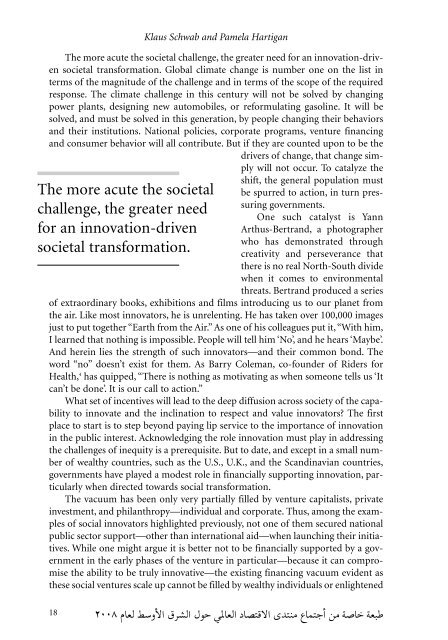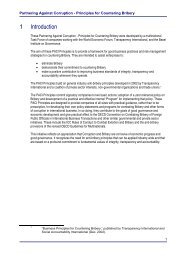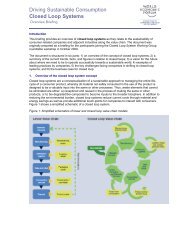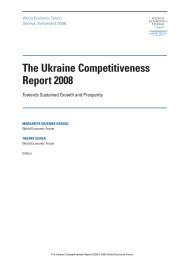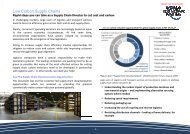ájhGôë°U á°VhQ - World Economic Forum
ájhGôë°U á°VhQ - World Economic Forum
ájhGôë°U á°VhQ - World Economic Forum
You also want an ePaper? Increase the reach of your titles
YUMPU automatically turns print PDFs into web optimized ePapers that Google loves.
The more acute the societal challenge, the greater need for an innovation-driven<br />
societal transformation. Global climate change is number one on the list in<br />
terms of the magnitude of the challenge and in terms of the scope of the required<br />
response. The climate challenge in this century will not be solved by changing<br />
power plants, designing new automobiles, or reformulating gasoline. It will be<br />
solved, and must be solved in this generation, by people changing their behaviors<br />
and their institutions. National policies, corporate programs, venture financing<br />
and consumer behavior will all contribute. But if they are counted upon to be the<br />
drivers of change, that change simply<br />
will not occur. To catalyze the<br />
shift, the general population must<br />
be spurred to action, in turn pressuring<br />
governments.<br />
One such catalyst is Yann<br />
Arthus-Bertrand, a photographer<br />
who has demonstrated through<br />
creativity and perseverance that<br />
there is no real North-South divide<br />
when it comes to environmental<br />
threats. Bertrand produced a series<br />
of extraordinary books, exhibitions and films introducing us to our planet from<br />
the air. Like most innovators, he is unrelenting. He has taken over 100,000 images<br />
just to put together “Earth from the Air.” As one of his colleagues put it, “With him,<br />
I learned that nothing is impossible. People will tell him ‘No’, and he hears ‘Maybe’.<br />
And herein lies the strength of such innovators—and their common bond. The<br />
word “no” doesn’t exist for them. As Barry Coleman, co-founder of Riders for<br />
Health, 4 has quipped, “There is nothing as motivating as when someone tells us ‘It<br />
can’t be done’. It is our call to action.”<br />
What set of incentives will lead to the deep diffusion across society of the capability<br />
to innovate and the inclination to respect and value innovators? The first<br />
place to start is to step beyond paying lip service to the importance of innovation<br />
in the public interest. Acknowledging the role innovation must play in addressing<br />
the challenges of inequity is a prerequisite. But to date, and except in a small number<br />
of wealthy countries, such as the U.S., U.K., and the Scandinavian countries,<br />
governments have played a modest role in financially supporting innovation, particularly<br />
when directed towards social transformation.<br />
The vacuum has been only very partially filled by venture capitalists, private<br />
investment, and philanthropy—individual and corporate. Thus, among the examples<br />
of social innovators highlighted previously, not one of them secured national<br />
public sector support—other than international aid—when launching their initiatives.<br />
While one might argue it is better not to be financially supported by a government<br />
in the early phases of the venture in particular—because it can compromise<br />
the ability to be truly innovative—the existing financing vacuum evident as<br />
these social ventures scale up cannot be filled by wealthy individuals or enlightened<br />
The more acute the societal<br />
challenge, the greater need<br />
for an innovation-driven<br />
societal transformation.<br />
Klaus Schwab and Pamela Hartigan<br />
18 2008 ΩÉ©d §°ShC’G ¥ô°ûdG ∫ƒM »ŸÉ©dG OÉ°üàb’G i~àæe ´ÉªàLCG øe á°UÉN á©ÑW


